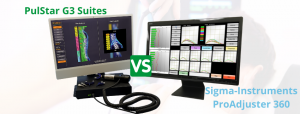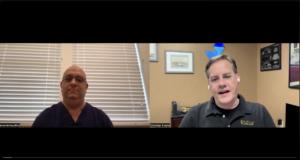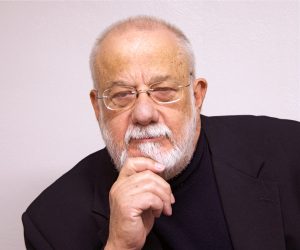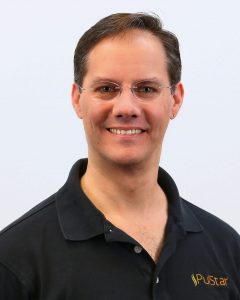The Definitive Guide to Multiple Impulse Therapy (MIT) Chiropractic Tools
A deep dive into computer-assisted analysis and adjustment to complement manual chiropractic treatments
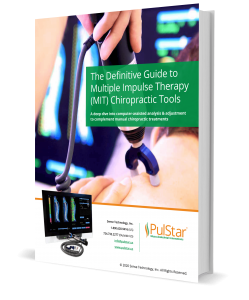
Don’t have time to read the whole guide right now?
Let me send you a copy so you can read it when it’s convenient for you. Just let me know where to send it (takes 5 seconds):
MIT Therapy's Place in Chiropractic
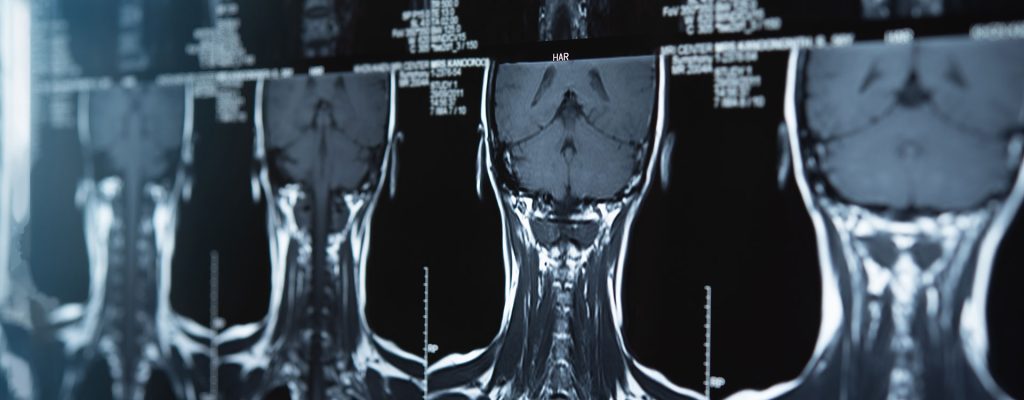
No matter how many years you have been practicing, MIT can lengthen your career.
Chiropractors are taught how to use their healing hands for good, but it is becoming clear that additional chiropractic tools are essential in order for chiropractors to remain and thrive in private practice.
More than 40 percent of chiropractors experience a workplace injury in their lifetime, and that does not factor in the accumulative wear, tear and strain that they sustain over the course of their careers, which prevents them from practicing for longer.

Unfortunately, studies show that, in today’s market, students are spending an average of $150,000 in undergraduate and chiropractic school tuition and much more to get started in their careers—meaning that the overall length of practice is more critical than ever for chiropractors to pay off debt and enjoy respectable earnings.
Chiropractic tools which reduce strain on the doctor and patient are the future of chiropractic
Chiropractors are also trying to deal with patients who are fearful of manual adjustments. More and more, patients are resisting “popping and cracking” chiropractic treatments, and opting out of chiropractic care entirely for pain in more delicate areas, such as the neck, wrists and feet—even though chiropractors are more than equipped to treat those conditions.
 For these reasons, chiropractic tools which reduce strain on the doctor and patient have become the future of chiropractic. Palmer College of Chiropractic recently recognized this shift in the chiropractic profession by introducing an Assisted Adjusting Techniques course into the curriculum, which features the use of Multiple Impulse Therapy (MIT). Multiple Impulse Therapy, defined in detail for you below, is now the gold standard technological advancement being used to extend chiropractic careers and provide gentle treatment to patients, with results they can see.
For these reasons, chiropractic tools which reduce strain on the doctor and patient have become the future of chiropractic. Palmer College of Chiropractic recently recognized this shift in the chiropractic profession by introducing an Assisted Adjusting Techniques course into the curriculum, which features the use of Multiple Impulse Therapy (MIT). Multiple Impulse Therapy, defined in detail for you below, is now the gold standard technological advancement being used to extend chiropractic careers and provide gentle treatment to patients, with results they can see.
What is MIT?
Multiple Impulse Therapy (MIT): the use of gentle impulses, employed by a skilled practitioner, applied to an area of musculoskeletal misalignment through the use of a computer-assisted impulse device to relieve pain or discomfort.

The early days
It all started in the 1980s, when Dr. Joseph Evans, developer of the PulStar system, designed the Model 115 Precision Adjustor, which was presented in 1987 at the Las Vegas Conference of the ACA/ICA. Dr. Walter Vernon Pierce soon joined the team in a marketing capacity because he believed it was a vital tool for the chiropractic world.
Sense Technology, then known as Kinetic Technology, was founded in 1989, when Multiple Impulse Therapy really started taking off in the chiropractic industry. In the beginning, MIT tools did not include any measure of spinal stiffness.
Since then, competing MIT devices have also entered the market, in all shapes, sizes and levels of computerization, including: Impulse IQ® Adjusting Instrument by Neuromechanical Innovations; SA 201, Smart Adjustor or Ultralign by Sigma Instruments; Activators I-V by Activator (part of Activator Method®); and Pro Adjustor, which is no longer in business, but was well-known.

The systems of today
The PulStar remains the leader in Multiple Impulse Therapy. Thanks to a dedicated team of researchers and developers led by Dr. Evans, The PulStar systems of today have come a long way from that original model in 1993. The impulse therapy analysis/ treatment tool has become nearly effortless to operate, offers customizable settings for individual patients and has multiple attachments to achieve various chiropractic methods. The sophisticated PulStar chiropractic software provides accurate analyses that are easily understood by both doctor and patient, allowing patients to see evidence of their own improvement. Patient viewing screens, integrated patient treatment stands and system portability are examples of some of the incredible features offered with the PulStar suites of today.
All of these features are a results of Sense Technology’s commitment to research that advances MIT, innovation and dedication to their global network of PulStar chiropractors.
Who Is Behind the PulStar
 About Dr. Joseph Evans, Sense Technology Founder
About Dr. Joseph Evans, Sense Technology Founder
Dr. Evans returned from Vietnam in 1967 and decided to finish his PhD thesis at Carnegie Mellon University (CMU) in Pittsburgh, PA. He spent three years evaluating and developing a heart assist device for his thesis project before graduating with a dual PhD in Civil and Bio Technology (the first of its kind from CMU). Westinghouse received a contract to further develop the heart assist device, so Dr. Evans went on to work for the company, eventually as the head of the Bio Systems Instrumentations Group. He spent five years at Westinghouse. Later, he patented a coke oven sealant that was sold to companies throughout the steel industry, and then Dr. Evans became an entrepreneur and started his own company. He spent many years in that role, but was looking for the opportunity to get back into developing products for the medical field. When he was given the chance to review the design of a chiropractic adjustment tool in the early 80s, he jumped on the opportunity with enthusiasm. From that time on, Dr. Evans has been dedicated to research and product development for the chiropractic industry, and his PulStar products are now used by thousands of chiropractors worldwide.
 About Christian Evans, Sense Technology President
About Christian Evans, Sense Technology President
Christian Evans began working for his family’s business, Sense Technology, in 1993. He was a Systems Analyst for the company at that time, and in that capacity, he assisted with much of the computer programming and software engineering for the PulStar systems. He left Sense Technology in 1997 to study Philosophy at Goucher College in Maryland, while also working as a consulting analyst at an IT firm in Turtle Creek called Innovative Decisions, Inc. Christian returned to Sense Technology in 2003, at first as a software developer and later as the President of the company. Today, Christian is responsible for the operations of Sense Tech The origins of pain
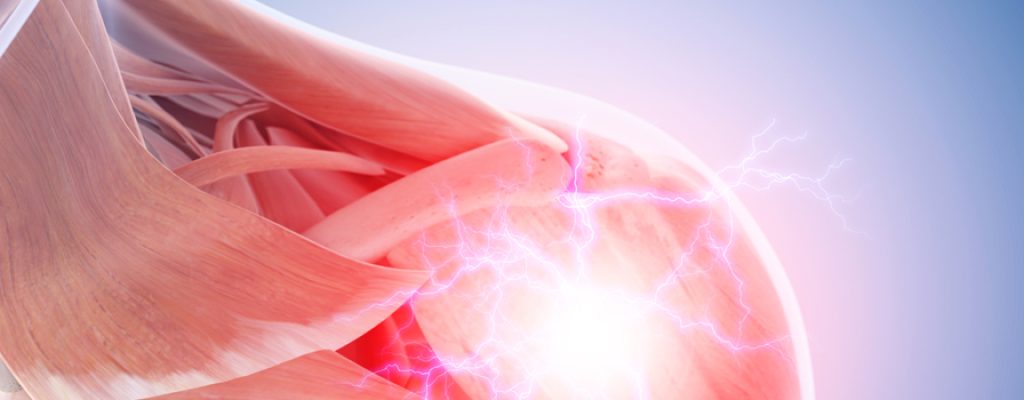
Original Research and Randomized Clinical Trials Validate MIT
Research—both internal for the purposes of product development, and external, conducted by other entities with an interest in musculoskeletal abnormalities—is the basis of every single one of Sense Technology’s technological advancements.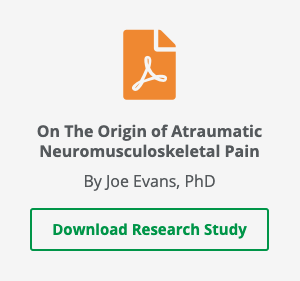 For example, one of Dr. Evans’ core studies focused on the origins of atraumatic neuromusculoskeletal pain. His findings on the subject were published in the Chiropractic Journal of Australia in January, 2016, in a peer reviewed paper titled “The origins of atraumatic musculoskelatal pain.” Dr. Evans’ theory has broad implications for the improvement of therapeutic modalities, not just for relief from pain, but for the prevention of pain at its origin. It states that:
For example, one of Dr. Evans’ core studies focused on the origins of atraumatic neuromusculoskeletal pain. His findings on the subject were published in the Chiropractic Journal of Australia in January, 2016, in a peer reviewed paper titled “The origins of atraumatic musculoskelatal pain.” Dr. Evans’ theory has broad implications for the improvement of therapeutic modalities, not just for relief from pain, but for the prevention of pain at its origin. It states that:
- Atraumatic musculoskeletal pain may begin when a muscle contracts, but a failure of the calcium pump prevents the muscle from relaxing.
- If this muscle dysfunction is not immediately corrected, it could compromise the lymphatic system, which could result in potentially serious consequences such as localized edema, decreased blood flow, production of abnormal products of cellular metabolism and other potentially serious health effects.
Other organizations, such as the European Space Agency, the Medical University of Lodz in Poland, Jingxi Hospital in Beijing, and the University of Zurich, have also used the PulStar to study pain—some even conducted costly Randomized Control Trials to further confirm their findings.
How it Works
Doctor and patient can see before and after effects on screen
Intersegmental red bars show discontinuity in spinal stiffness between two of the vertebra. Yellow bars indicate higher than expected stiffness.
The power of computer-precision multiple impulse helps you and your patient to be able to clearly see the areas of spinal stiffness and then see the effects of the adjustment.
Areas that can be treated
Typical chronic back pain conditions
According to the American Chiropractic Association, one half of working Americans admit to back pain each year, and it’s the most common cause of missed work. While diseases can cause back pain, more often than not it is a result of musculoskeletal issues. The PulStar system is designed specifically to treat musculoskeletal conditions, and could be ideally suited to treating back pain.
Watch Dr. Maggio Explain How The PulStar Helps This Condition
Lower back pain is the most common type of back pain, with over 31 million Americans experiencing this symptom at any given time. It is also the leading cause of disability worldwide, according to the Global Burden of Disease 2010. The PulStar’s multiple-impulse technology, paired with Essential Elements Cream massaged to relax the muscles, can provide a clear treatment plan for lower back musculoskeletal misalignment, while also allowing for some relief between visits.
Watch Dr. Maggio Explain How The PulStar Helps This Condition
Spasms of the skeletal muscles are the most common type of muscle spasm. Patients complaining of brief, painful spasms are often advised to gently stretch muscles, but chiropractic care applied to the area may help to reduce occurrences of muscle spasms. The musculoskeletal therapy of The PulStar device can be applied to the area to help enhance chiropractic treatment.
Everyday life provides a plethora of opportunities to develop neck pain—sleeping, bad posture, improper stretching and even talking on the phone can lead to this symptom. Because neck pain can happen at any time, Essential Elements Cream massaged into the neck muscles can provide immediate relief by relaxing muscles while also being used as part of a treatment plan involving The PulStar device.
Watch Dr. Maggio Explain How The PulStar Helps This Condition
Stress tension and musculoskeletal pain in the shoulders is a common symptom treated by chiropractors, but sometimes patients complain about pain coming back between visits. Essential Elements Cream can be used outside of the chiropractor’s office for tension relief, and when combined with The PulStar device, it can minimize tension symptoms overall.
Watch Dr. Maggio Explain How PulStar Helps This Condition
Joint pain and potentially related conditions
Treatment options for joint pain are varied and wide-ranging. Many patients are choosing to add chiropractic care to their joint pain regimen, and The PulStar doctors are able to offer an additional option that is scientific, gentle, and provides a different approach to the treatment of musculoskeletal joint pain.
Nerve fiber related conditions
Musculoskeletal issues are sometimes at the root of pain or numbness in the arms, legs, hands or feet. Patients are often surprised to find out that chiropractic methods aren’t just used to treat back pain, and can be used on the extremities as well. Similarly, The PulStar device was designed to assist chiropractors beyond the treatment of back pain, and can provide relief to patients with pain or numbness in the extremities.
Repetitive strain related conditions
Pain in the heel of the foot when standing or walking is often the result of plantar fasciitis, which is when the ligament supporting the arch of the foot is damaged. This musculoskeletal issue can be treated with an Essential Elements cream massage, which helps to relax the ligament connecting the heel to the toes. The effect of the cream can be enhanced with the use of The PulStar device, which helps to push the cream through the tough skin on the sole of the foot and into the affected muscle.
Watch Dr. Maggio Explain How The PulStar Helps This Condition
* Conditions caused by joint subluxation, restricted joint mobility, myofascial spasm or ligamentous strain.
Related Blog Post Links:
Computer-assisted MIT vs. Manual Therapy
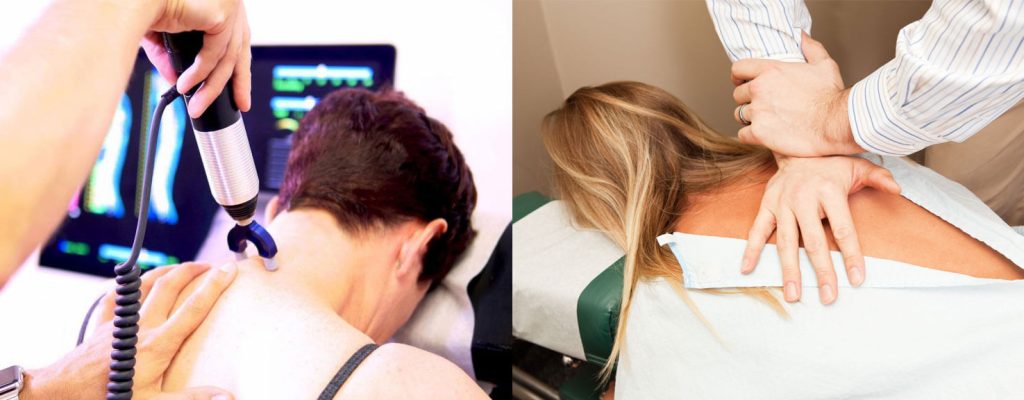
MIT chiropractic tools are designed to enhance and complement manual adjustments
While the chiropractic industry was founded on the concept of using one’s hands, rather than drugs or expensive surgeries, to relieve pain in a natural way, computer-assisted Multiple Impulse Therapy chiropractic tools are designed to enhance chiropractic practice.
| Computer-Assisted MIT | Manual Therapy |
|---|---|
| Lengthens chiropractic careers by preserving doctors’ hands from workplace injury and decades of wear and tear. | Takes a toll on chiropractors. Many are forced to hire associates or retire earlier than planned due to work-created injuries or disabilities. |
| Pain-free for patients, with no alarming popping or cracking sounds. | Can cause pain, or even injury to a patient, if done incorrectly. For this reason, many patients are fearful of manual adjustments. |
| Gets patients better quicker, allowing chiropractors to focus on wellness plans, patient retention and practice growth. Some patients experience pain relief after just a couple of visits. See how it helps your patients. | Chiropractors may need to see a patient weekly to maintain relief, which can lead to patient frustration. |
| Can analyze the area of musculoskeletal misalignment both before and after an adjustment to target problem areas and measure improvement. See how it works. | Chiropractors must rely on their hands as a diagnostic tool. |
| Produces easy-to-understand progress reports that patients can take home and show to others. | Chiropractors must produce their own demonstrations and reports in order to prove improvements to patients. |
| Uses precise impulses determined by a scientific algorithm to prevent malpractice and tailor treatment to patients’ specific needs. | Chiropractors must rely on their hands to prevent malpractice. |
The ripple effect
More revenue and patient satisfaction, and less doctor fatigue
Introducing a Multiple Impulse Therapy device into a chiropractic setting sets a series of situations in motion, eventually leading to an overall increase in revenue over time through patient satisfaction and lack of doctor fatigue.
Dr. Steve Walton, owner and primary chiropractor at Lahaina Health Center in Maui, describes this phenomenon in detail through a series of videos and blogs. He often describes patients who were frustrated by chronic pain, and left amazed by the effects of the PulStar. He also talks about how he was able to integrate the MIT device at his practice:
“I still have a few patients that prefer manual adjustment. But 90% of my practice is now instrument, and it has greatly reduced the physical and mental stress of practice. I wish I’d switched 5 or 10 years ago, because it would have saved me a lot of wear and tear.”
Dr. Steve Walton

Reports promote patient satisfaction and word-of-mouth referrals
For him, and many other chiropractors who have made the switch, the increase in referrals was immediate—particularly when they would print the automated reports for patients to take home with them. Also, by having a MIT device, they were able to immediately differentiate themselves from their competitors and prove that they value a scientific, reliable approach to their patients’ health.
Is PulStar MIT right for my practice?
In Christian Evans’ 4-minute case for the PulStar above, he makes the following points:
- With the PulStar you can do so much more than just analysis and adjusting of the spine—You can use it on soft tissue and extremities
- It’s got marketing tools built into its software
- It’s more precise and more gentle than what doctors can do with their hands, which saves doctors from practice injuries and enables a longer practice life
- The PulStar system records the forces applied to each patient at each vertebra adjusted, providing a computer record that can greatly reduce malpractice risk
- All this comes on the heels of a series of randomized control trials and other clinical studies performed recently that overwhelmingly support the effectiveness of the PulStar for various conditions.
Testimonials
What The PulStar Doctors Are Saying
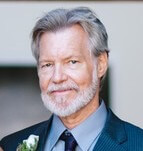
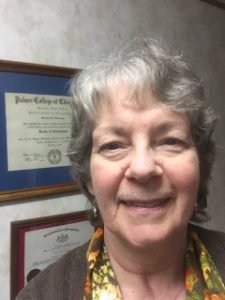

What The PulStar Patients Are Saying









Read more about PulStar Multiple Impulse Therapy
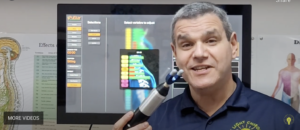

The Art and Mastery of Instrument Adjusting: A Chiropractor’s Journey
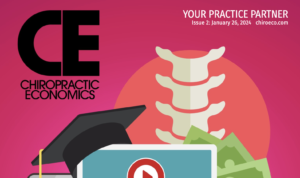

Enhancing Chiropractic Care Through Comprehensive Education and Innovative Tools: The PulStar System
